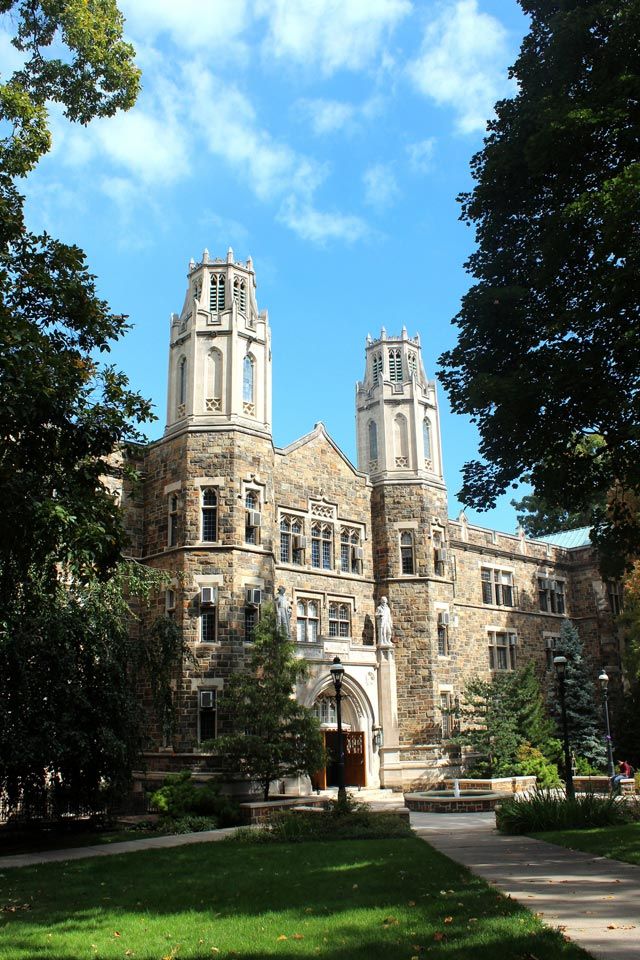It’s not the way the tune usually goes. Growing up, Bryan Berger avidly pursued both music and science. He began his undergraduate studies at the University of Illinois Urbana-Champaign in music performance, but switched to engineering after his first year.
“I played piano and French horn,” says Berger, assistant professor of chemical engineering, “but on my father’s side of the family they are all engineers, so it was kind of natural.”
After switching majors, Berger joined the less demanding, non-performing orchestra at the school. “They called it, aptly as it turns out, the engineering orchestra.”
Two years ago, he began collaborating with doctors at Lehigh Valley Health Network to combat Stenotrophomonas maltophilia, an emerging, drug-resistant bacteria that was causing a high rate of lung infections at the hospital.
As a chemical engineer, Berger brought quantitative and modeling skills and a problem solving mentality to the table. After identifying the bacterial culprit by analyzing proteins in patients, Berger devised a novel way to isolate and expose it.
“Drug resistance is a huge problem,” says Berger, “and there’s no one-size-fits-all solution. If you try to eradicate a bacteria by applying selective pressure to a protein that it secretes, the bacteria will adapt and generate a different protein. It’s not a very good long-term solution.”
Instead, Berger targeted the biofilm that the bacteria produces for protection. These exopolysaccharides are gel-like sugar compounds that Berger likens to the illustrations of tartar you might see in a toothpaste commercial. They provide a shell that helps the bacteria avoid detection by a host and penetration by antibacterial drugs.
“If we inhibit the film production process early, it leaves the pathogen exposed, and the immune system has a better shot at fighting the bacteria,” he says.
Berger uses a polysaccharide lyase, Smlt1473, to degrade the biofilm. It has the added benefit of breaking the cycle of drug-resistance. “If bacteria is under stress from an antibacterial,” he says, “there’s a strong incentive to react to remain viable. It’s less likely the bacteria will evolve with this approach, because attacking the film doesn’t trigger the same stress response.”
The collaboration with Lehigh Valley Health Network and other partners generates educational fringe benefits. “It’s important for students to learn how to interface with doctors, statisticians and others they will need to work with once they begin their careers.
“It’s not always obvious how deeply science, physics, chemistry and the like connect to society. With projects like this, students learn first-hand the impact of their work.”
The polysaccharide lyase also degrades many kinds of polymers, says Berger. “It’s funny, a lot of my mom’s side of the family worked in the Chicago stockyards, and we’ve now been approached by Sterilex, which serves the meatpacking industry, to see if it might be useful to them.”
Another of Berger’s projects involves quantum dots—semiconductor nanoparticles that can be pricey to produce—and serendipity.
“This stenotrophomonas maltophilia that causes lung infections is nasty, and it can also mow right through silver, which is scary as silver is often used as an antibacterial. On the other hand, it’s a remarkable cell that creates well-defined nanoparticles that are hard to make in the lab. You can throw all kinds of metals at it and it will spit them out embedded in these particles.”
Berger has devised a way of producing quantum dots using an engineered form of the bacteria that he’s patented. It employs the bacteria’s own threat response to the metal introduced, cadmium in this case, which the bacteria removes by precipitating it out in metal-loaded quantum dots.
“It’s very scalable,” Berger says, “and you can make these dots at a tiny fraction of the usual cost of producing them. My original thought for them was solar cells, but I bumped into Steve McIntosh [associate professor of chemical engineering], and he suggested we take the quantum dots and use a photocatalytic process to make liquid fuel from water and sunlight—basically artificial photosynthesis.”
The resulting methanol is clean to produce, it burns cleanly and it should be competitively priced. Berger and McIntosh received a major grant from NSF to expand their project.
“You don’t know where it will go when you start, and you have to be tenacious, but if I had begun aiming for these things, I never would have reached them. It’s only through the process of research and developing ideas that you find solutions.”
As for music, Berger is keeping up his chops, though he doesn’t have as much time to woodshed as he might like.
“I play with a community group and with the orchestra in Doylestown,” he says, “but these days my plate is pretty full.”
Story by Chris Quirk
Photos by Christa Neu

